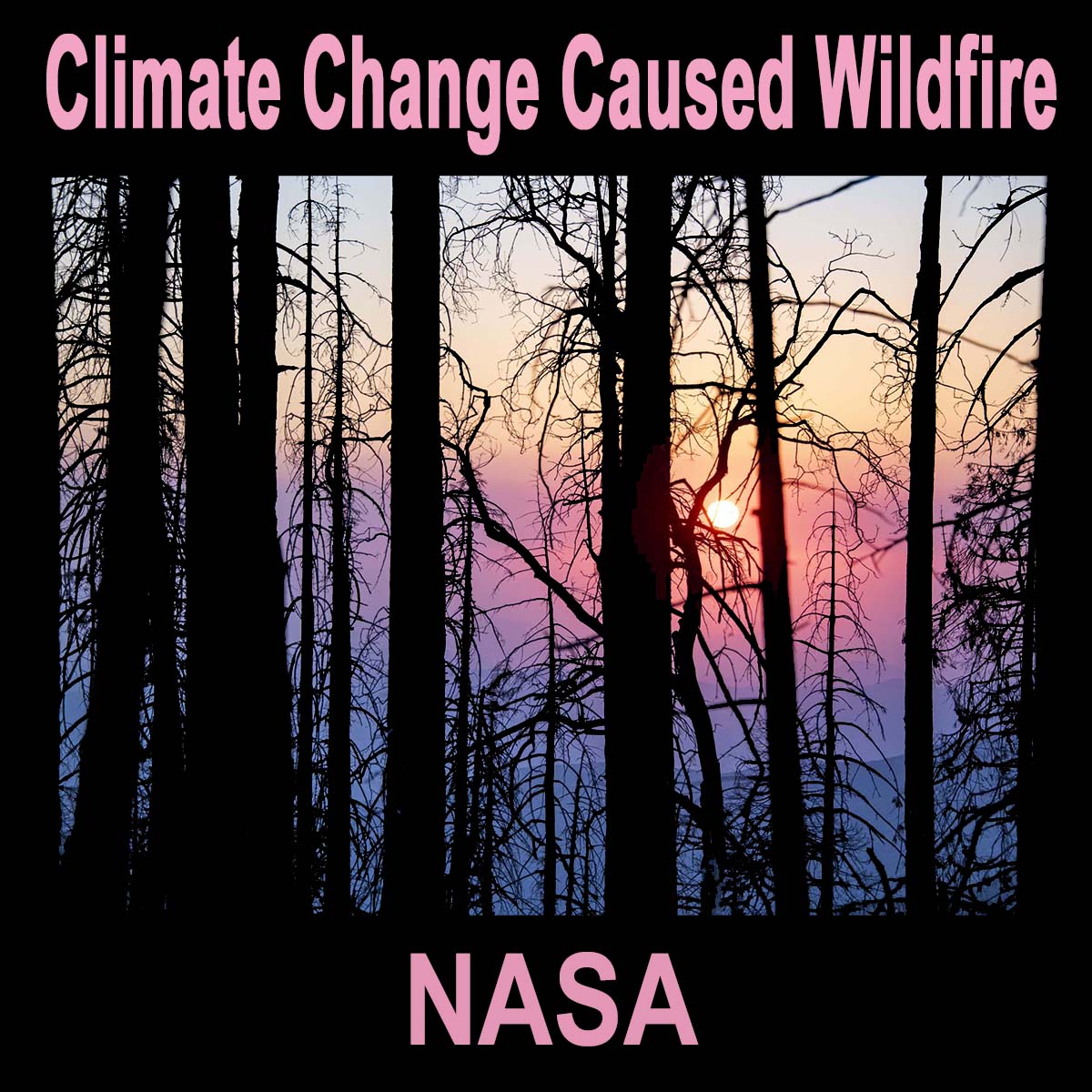
This piece by NASA really supports the interpretation that no, the increase in fires is not natural cycles, not accumulated fuels because of fire suppression, or even enhanced by climate change. What they are saying is that the unprecedented increase in fires we have been seeing lately is “caused by climate change.”
The increase in wildfire is attribute to warming temperatures overall, warming at night, longer dry periods, lower fuel moisture, dynamics related to warming enhanced ignition, enhanced fire behavior, and increased ignition from lightning strikes created by warming enhanced thunderstorms.
Summary from NASA, “While every fire needs a spark to ignite and fuel to burn, it’s the hot and dry conditions in the atmosphere that determine the likelihood of a fire starting, its intensity and the speed at which it spreads. Over the past several decades, as the world has increasingly warmed, so has its potential to burn.”
We know that wildfire has increased dramatically in recent years and this is echoed in this article, “Our ability to track fires in a concerted way over the last 20 years with satellite data has captured large-scale trends, such as increased fire activity, consistent with a warming climate in places like the western U.S., Canada and other parts of Northern Hemisphere forests where fuels are abundant.” But this knowledge alone still has holes.
Predominant in our climate change culture is the concept that fires are a natural part of ecology, and that when we can tell, warming has enhanced fire, not caused the catastrophe. This is an academic definitive, based on statistical science that requires large amounts of data to form robustness. Recent trends however, have not been occurring long enough for large amounts of data to be collected. Once a large amount of data is collected in another decade or two, sure, we will be able to tell with traditional science evaluation.
Another predominant thing in our climate change culture is that these wildfire catastrophes are caused or enhanced by excess accumulated fuels and overly dense forests from fire suppression activities begun in earnest in the early 1940s and often referred to as “Smokey Bear fire suppression policy.” Never mentioned in this article on the cause of the recent increase in fire catastrophes is this excess accumulation of flammable forest debris caused by fire suppression. Why? Professional judgement.
It is becoming increasingly acknowledged that definitive statistical science is one of the major reasons why climate change impacts are happening so much sooner than projected. This is because of the poor ability of statistics to robustly capture a recent trend. This is a problem with all rapidly increasing trends, not just climate impacts. With climate impacts though, the risks are much higher than with most other trends.
This conundrum of statistical science’s inability to capture recent trends has captured the attention of consensus climate science organizations at the highest levels. These world leading scientists understand that scientific projections alone cannot save us, the trends are changing too fast, the impacts are too outsized, the risks too large. What they are suggesting is that climate scientists use more professional judgment in their findings.
Professional judgement? Isn’t this what scientists do? Not at all. Scientists are scientists. They observe evidence, and report on the certainty that whatever evidence they are defining is valid. Professionals on the other hand, are workers that apply science to life. Engineers, medical doctors and economist are a few sectors that apply academic science to their profession.
An engineer’s design isn’t really concerned with when or why steel fails. The engineer takes the scientific understanding of the conditions where steel fails and uses his or her professional judgement to design a structure that is strong enough to keep from failing. These workers are applied scientists who use professional judgement to ensure their work is appropriate. Now, finally, we have scientists using professional judgment in a meaningful way.
NASA says, “In the Western U.S., people are accidentally igniting fires all the time, but when we have a period of extreme weather, high temperatures, low humidity, then it’s more likely that typical outdoor activity might lead to an accidental fire that quickly gets out of control and becomes a large wildfire.”
Nasa is taking a giant leap forward in climate science. They are using professional judgement to define what is happening when traditional observational science fails. Nowhere in this article does it say,”we don’t know yet.” That’s a leap.
NASA-Goddard Space Flight Center, Satellite data record shows climate change’s impact on fires, ScienceDaily, September 10, 2019.
https://www.sciencedaily.com/releases/2019/09/190910154657.htmb

